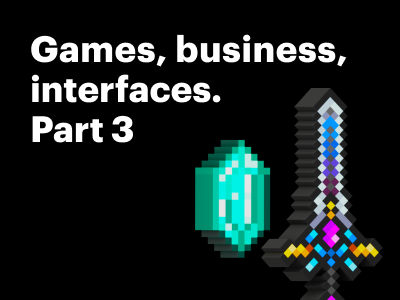1 August 2018
JetStyle Digest: 5 useful articles one UX/UI you should read
As UI/UX design is one of our main expertise areas, we spend a lot of time on researching this field and studying the latest trends. This week we decided to share some of our findings with you.
We asked our designers to pick five articles on UX and UI design that they found especially useful and interesting, and have put them into this digest for you. Have a read!

What to know before building your first voice skill
Voice is a new UX paradigm. The way people see and touch is very different from how they hear and talk. This means user interaction must be re-thought from scratch. For example, with touch, it’s easy to show a user many choices at once. Think of a home screen with 24 installed apps per page. With voice, telling a user anything over 3 choices at once will be both boring and hard to think through. On the other hand, voice has a *huge* advantage of being eyes-free, hands-free. There are many daily activities that take up our eyes and hands, at home and at work. Think driving, cooking, or presenting in a meeting. These moments are bad for mobile apps, but great for voice skills. I predict the most interesting voice skills will find ways to add value where mobile apps can’t.
Optical Effects in User Interfaces (for True Nerds)
Our eyes are weird organs that often are telling lies to us. But if you know the peculiarities of human visual perception, you can build more approachable and clean designs. Not only do type designers utilize optical tricks for creating readable and well-balanced fonts, but it’s also helpful for interface designers, who build user-machine communication.
How To Become A Centaur
For the last few decades, the story of AI has been one of a rising hero — or is it of a rising villain? In 1997, an AI beat Garry Kasparov at chess, and in 2011 and 2016, AIs beat the world’s top humans at Jeopardy! and Go. And now, many fear that AI will take over our jobs, or even take over humanity itself. Meanwhile, the story of IA has been one of a tragic fall.
But now, these two story threads may be starting to wrap together, forming a new braid in history: AIA — Artificial Intelligence Augmentation. IA can give AI the human partnership it needs in order to remain aligned with our deepest goals and values. And in return, AI can give IA some new replacement wheels for the bicycle of our mind.
F-Shaped Pattern of Reading on the Web: Misunderstood, But Still Relevant (Even on Mobile)
When people scan in an F-shape, they miss big chunks of content based merely on how text flows in a column. The skipped phrases and words are often as important — or even more important — as those words that are read. But users won’t realize this since by definition they don’t know what they don’t see.
In responsive design or any liquid-text layout for that matter, text flows differently depending on window size. So, a user who scans in an F-shape on his phone, for example, would not fixate on the same words if he F-scanned the same page on a desktop— just because of the way the content flows in different viewport sizes.
Creating Usability with Motion: The UX in Motion Manifesto
‘UI Animation’ is typically thought of by designers as something that makes the user experience more delightful, but overall doesn’t add much value. Thus, UI Animation is often treated like the red-headed stepchild of UX (apologies to red-headed stepchildren everywhere). If at all, it usually comes at the end, as a final lipstick pass.
Animation is all about tools. Principles are the practical application of ideas that guide the usage of tools and as such, Principles provide high leverage opportunities for designers.
What most designers think of as ‘UI Animation’ is, in fact, the execution of a higher modality of design: the temporal behavior of interface objects during realtime and non-realtime events.
You might also like



